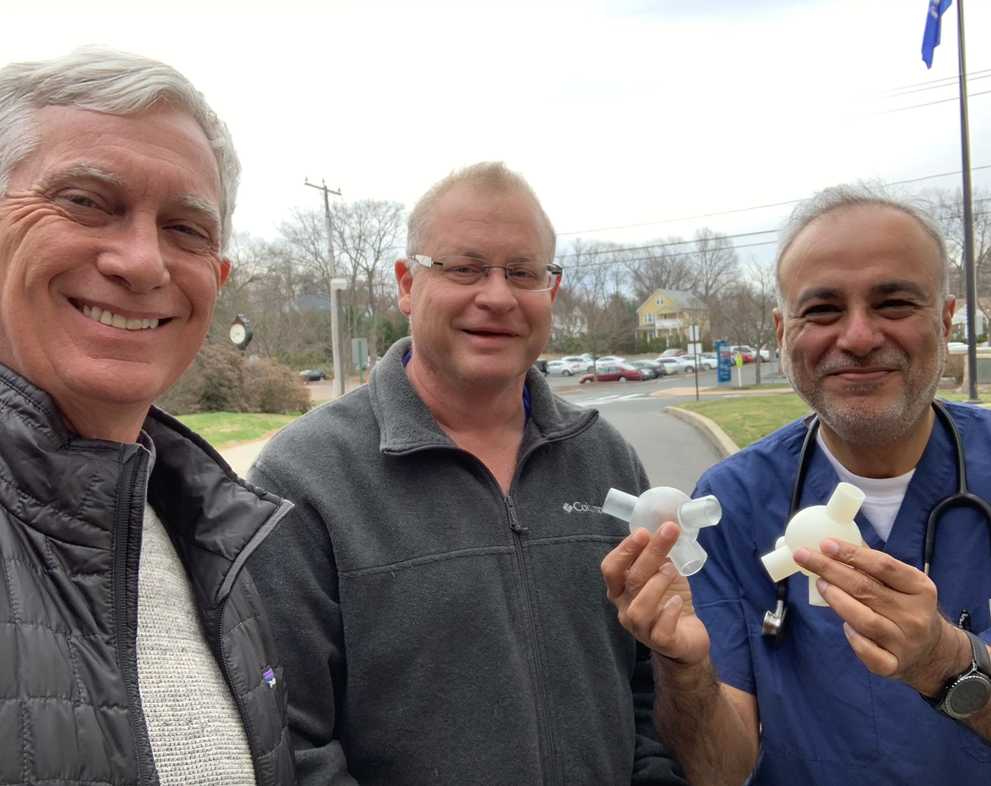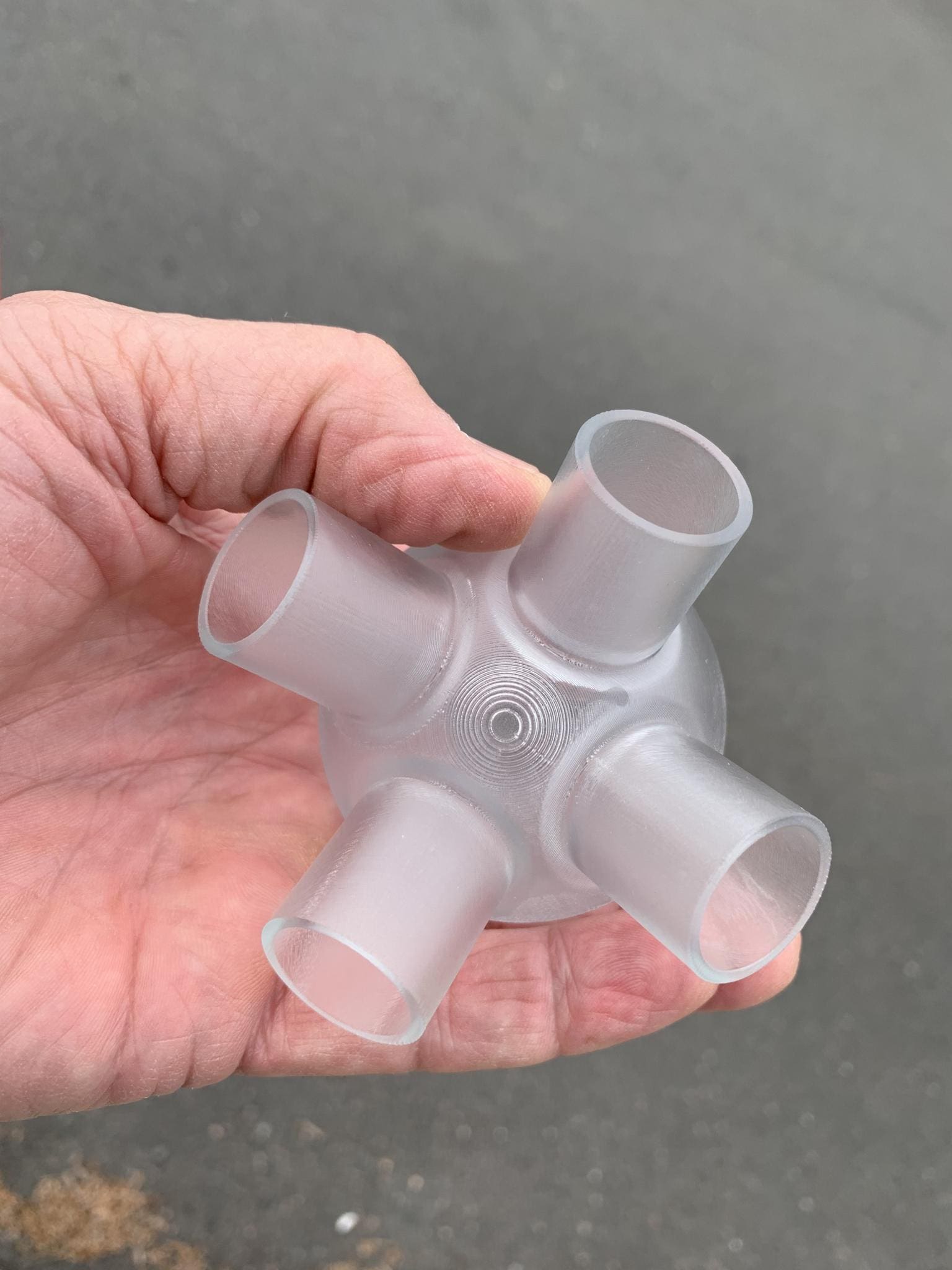By Nan Price, Content Manager MetroHartford Alliance

Photo: (left to right) InterPRO Additive Manufacturing Group CEO Kevin Dyer, Interactive CAD Solutions Owner Bob Conley, and State Senator Dr. Saud Anwar
InterPRO Additive Manufacturing Group CEO Kevin Dyer reached out to spread the word about a multi-valve ventilator he and other Connecticut innovators collaborated to create. After reading a New York Times op ed from a critical care specialist, Kevin homed in on the fact that hospitals are running out of ventilators and more equipment is needed.
He quickly put out a call to his community of engineers and designers. “I asked people to spread the word to see if we could collectively come up with an idea to branch a ventilator,” Kevin says.
“The idea wasn’t mine. Others had talked about it, but they were branching it by hand with tubes, which is awkward. I wanted to find out if someone could come up with an idea for a contraption that would simplify the process and make it a lot faster,” he explains.
The feedback was hopeful. “People responded amazingly,” notes Kevin. “So many people wanted to help.”
One individual in particular was mechanical design engineer Robert Conley, Owner of Interactive CAD Solutions, who responded with ideas, but required more information.
“Bob had two designs, but he needed to know the port diameter before InterPRO could move forward with 3D printing the first prototype,” explains Kevin. “A friend up the street from me is an anesthesiologist. I was able to get a tube from him and get it to Bob, who used his home 3D scanner to measure it and then finalize two ventilator valve designs.”
At the same time, Kevin was busy reaching out to friends with more connections to people in the medical community willing to test the valve prototype. State Senator Saud Anwar, a medical doctor specializing in lung disease and critical care, received a message and responded.


The next step for Kevin and Bob was to increase awareness of the device they had developed—which came with its own set of challenges. They shared the CAD files on Saturday, March 28.
“We started to hear immediately that there were questions about whether it was a good idea use the device. I was copied on a large email chain with many doctors who were all asking the same question: Is this safe? Is this advisable? The bottom line is, there’s tremendous resistance to the idea of using this device unless it’s an absolute life or death situation,” emphasizes Kevin.
“Our intention was to make people aware of the files needed to design the device and share the files so people anywhere in the world can download it, build it with their 3D printers, and potentially save lives. The hope is that, somewhere, somehow, in some circumstances it’s going to help somebody,” he says.
“Bob has been getting a lot of emails from all over the world. On March 29, he was contacted by a doctor from Zimbabwe who said he had lost patients because he only had one ventilator, and he couldn’t support more than one person at a time,” Kevin shared.
“We also received a picture this week from Pakistan, where some doctors shared that they had built the device. So, in some places, I feel that it’s probably going to be effective in helping doctors save lives. But, it’s the doctor or hospital’s call as to whether the device should be used,” he underscores.
Other versions of the splitter are being produced elsewhere and some have received clearance from the U.S. Food and Drug Administration for emergency medical use.
In the meantime, Kevin continues to share the CAD file design in the hopes that it could save lives. “A lot of people are aware of the design in our community here in Connecticut,” he says, “Bob and I have shared the file on our websites and on LinkedIn to build awareness so anybody, anywhere can make their own decision about building and using the device.”
